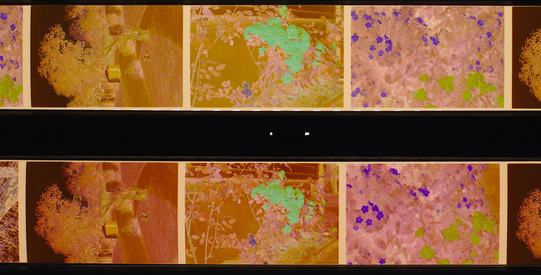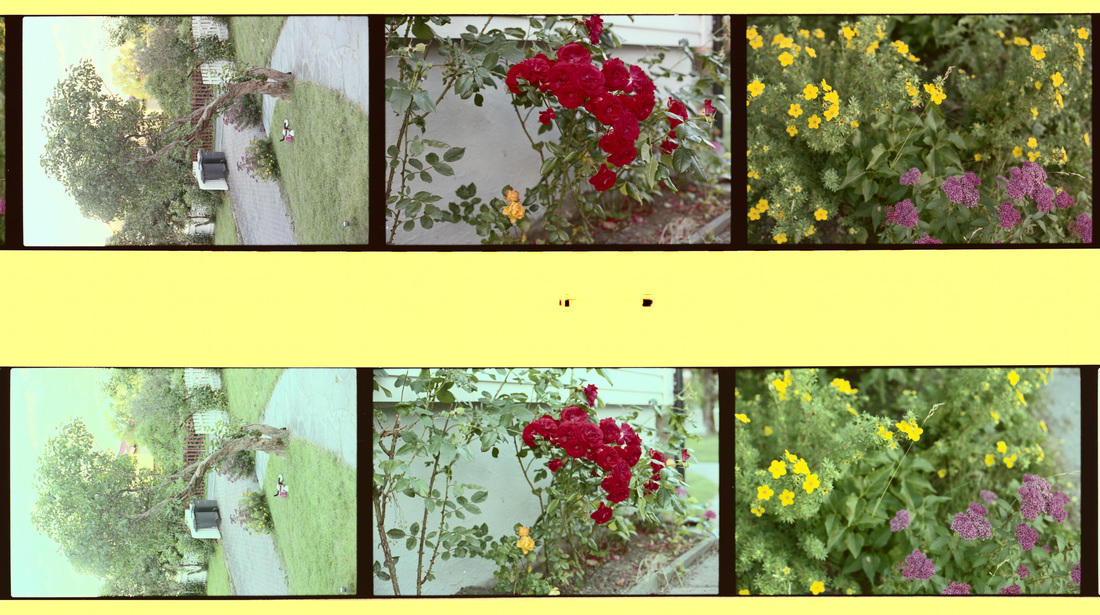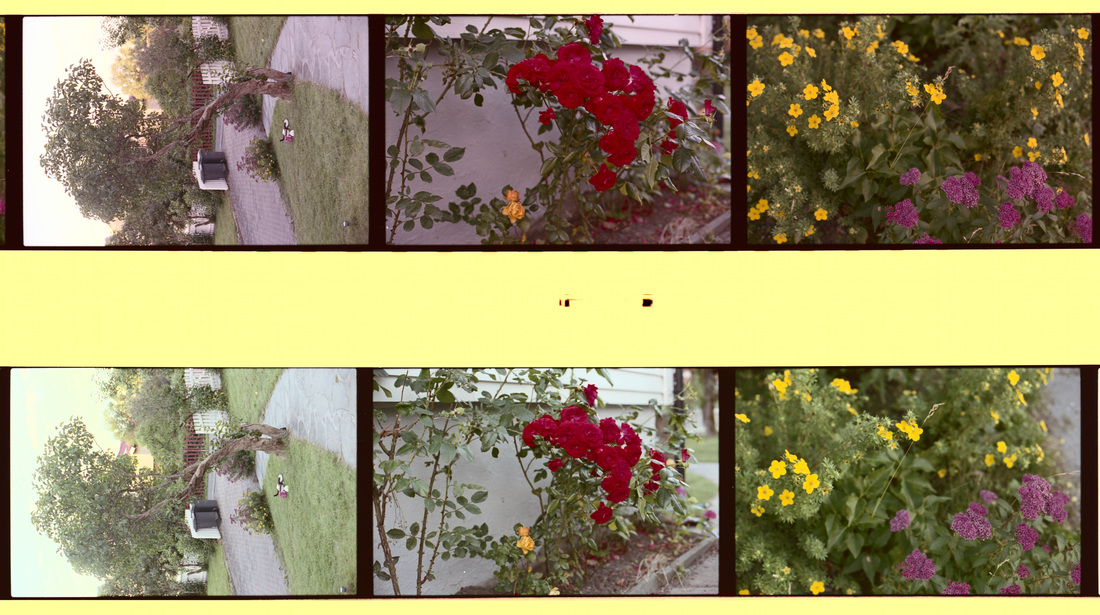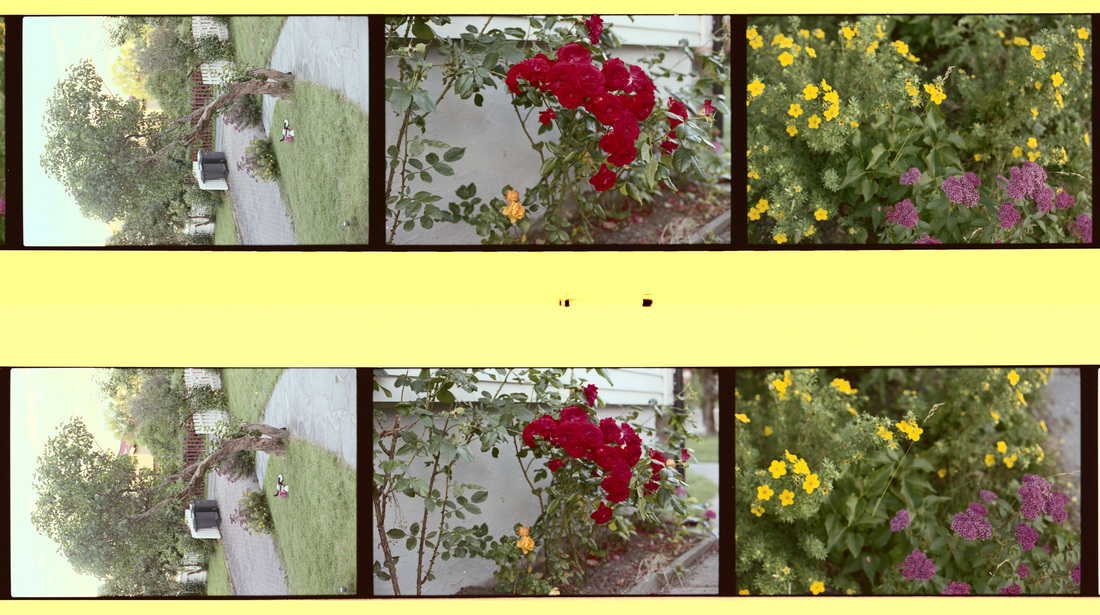| Anyway, as a first test, I just developed a piece of the test roll I use to check my chemistry at 38°C to see how the results would compare with a piece of the same roll developed previously at 30°C. The picture on the right shows the two strips side by side photographed on the light table. There are some differences which are visible straight away on those two negatives. The bottom one is a bit more dense and a bit more reddish than the top one. To me this is quite a big difference. Typically I use this test to compare the results I get with with old chemistry with those I get with fresh chemistry. All the other strip I have developed were processed at 30°C and look very close to each others. I really cannot tell the difference by just looking a the negative. |
| To try to see if one would look obviously "better" than the other I combined the two adjusted strip into a single image. I was careful when doing the adjustment to only change the white balance and the exposure. I used the grey wall in the middle of the center image to set both the white balance and the exposure. This way, if the two negative would have a big difference in contrast or saturation it would be visible. Looking at the results, the two set of images look pretty similar to me. Maybe the shadows look a bit brighter on the bottom strip. Maybe the highlights look a bit warmer on the top strip. But these are really small differences compared to the color balance and exposure which has been corrected. What do you think? Do you have a favorite? Do you see other differences which I have missed? |
| fullresolution.zip |
Conclusion
To further investigate, as of now I am switching to processing my film at 38°C (at least for a while) to see if I notice any difference and how consistent are the results I get. I'll update the previous post with the 38°C process and times I will use.



